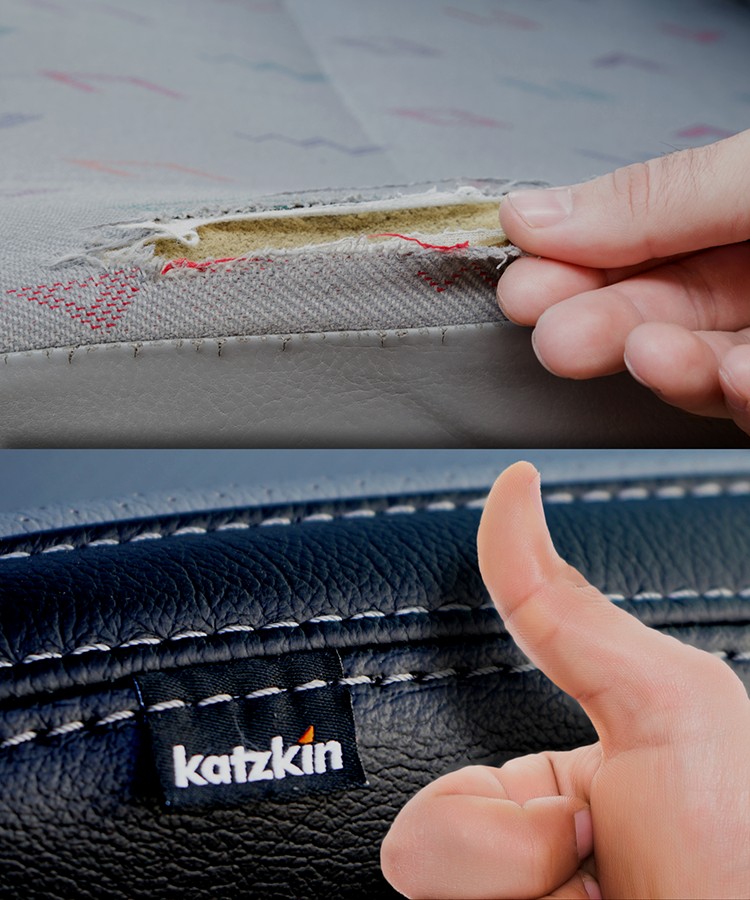Car interiors endure daily wear and tear, from coffee spills and muddy shoes to the relentless fading power of the sun. Over time, your car’s upholstery can become stained, torn, or simply worn out, detracting from your vehicle’s comfort and overall appeal. If you’re considering refreshing your car’s interior, understanding the cost of upholstery repair is crucial. This guide will delve into the factors influencing car upholstery repair costs, helping you determine how much to repair car upholstery and explore your options.
 Car seats reupholstery process
Car seats reupholstery process
Understanding Car Upholstery Repair: What’s Involved?
Car upholstery repair, often referred to as reupholstery, is more than just replacing fabric. It’s a detailed process that can revitalize your car seats, and sometimes even door panels and headliners. A comprehensive car upholstery repair typically involves:
-
Removal of Old Upholstery: The existing fabric or leather is carefully removed from the seats. This involves unzipping seams, detaching clips, and taking off the old material.
-
Foam and Spring Inspection & Repair: Once the old upholstery is off, the underlying foam padding and springs are inspected. Damaged or flattened foam is replaced to restore seat comfort and shape. Springs may be repaired or replaced if broken or sagging.
-
Patterning and Cutting New Upholstery: The old upholstery serves as a template. It’s meticulously taken apart at the seams to create patterns for the new material. The new upholstery fabric or leather is then cut and sewn based on these patterns, often with customized design elements.
-
Installation of New Upholstery: The new upholstery is carefully fitted over the seat frame, working from back to front to ensure a tight, factory-like fit. This step requires expertise to stretch and secure the material properly, attaching it to the inner frame for durability.
-
Final Assembly and Reinstallation: Once the new upholstery is securely in place, the seats are reassembled and reinstalled in your vehicle.
This process demands skill and time, contributing to the overall cost of car upholstery repair.
When is Car Upholstery Repair Necessary? Recognizing the Signs
While some car owners opt for reupholstery to simply upgrade their car’s interior aesthetics, often repair becomes necessary due to damage or wear. Here are common indicators that it’s time to consider car upholstery repair:
Missing Foam
Significant chunks of missing foam are a clear sign of wear and tear. Seats with missing foam become uncomfortable and lack proper support, making reupholstery a practical solution for restoring comfort.
Misshapen Seats
Over years of use, the foam in car seats can flatten and lose its original shape. This leads to misshapen seats that are no longer comfortable or supportive, indicating the need for upholstery repair to restore seat structure and comfort.
Missing Material
Large tears or missing sections of fabric or leather not only look unsightly but can also lead to the inner padding materials like foam and batting falling out, necessitating immediate reupholstery to prevent further damage and maintain seat integrity.
Protruding Springs
Exposed or protruding springs are not just uncomfortable; they can be painful and damage clothing. This is a serious issue requiring immediate upholstery repair to ensure safety and comfort.
Extensive Stains
While minor stains can sometimes be cleaned, deeply ingrained or widespread stains that resist cleaning efforts are a strong reason to consider reupholstery to refresh the interior and eliminate persistent blemishes.
Lingering Odors
Persistent odors, especially from spills or smoke, can permeate car upholstery and be difficult to remove through cleaning alone. Reupholstery offers a solution to eliminate ingrained odors by replacing the affected materials.
Extensive Bubbles and Tears
Numerous bubbles or tears in the upholstery indicate significant wear and potential for further damage. Addressing these issues through reupholstery can prevent the upholstery from deteriorating further and maintain the interior’s condition.
How Much Does Car Upholstery Repair Cost? Decoding the Price Tag
The question of how much to repair car upholstery doesn’t have a single definitive answer. The cost varies based on several key factors. However, to give you a general idea, you can typically expect to spend anywhere from $200 to $750 per car seat for standard fabric upholstery, and $500 to $1500 or more per seat for leather upholstery. For a complete car reupholstery, including front and back seats, and potentially door panels, the cost can range from $1000 to $7500 or higher.
For high-end vehicles or custom, intricate designs, the cost can significantly exceed these ranges, sometimes reaching upwards of $10,000 or more. For instance, Katzkin, a provider of custom automotive leather interiors, has starting prices from around $1795 for a full set of seats, but this can increase based on vehicle type and customization choices.
To get a precise estimate for how much to repair your car upholstery, it’s always best to get a personalized quote from an upholstery specialist, considering your specific vehicle and desired materials.
Factors Affecting Car Upholstery Repair Costs: What Drives the Price?
Several elements influence the final cost of your car upholstery repair project:
-
Vehicle Type and Size: Larger vehicles, such as SUVs and trucks, generally have larger seats, requiring more material and labor, thus increasing the cost compared to smaller cars. Luxury vehicles or those with complex seat designs can also be more expensive to reupholster.
-
Type of Upholstery Material: The choice of material significantly impacts cost. Fabric upholstery is typically more budget-friendly than leather. Within leather options, premium leathers like fine automotive leather or exotic materials will cost more than standard leather or vinyl options. Custom materials or unique patterns can also increase material costs.
-
Extent of Damage: The amount of repair needed affects labor costs. Minor repairs like patching small tears might be less expensive than complete reupholstery. If seat foam, springs, or frames need extensive repair or replacement, this will add to the overall cost.
-
Complexity of Design: Simple, standard upholstery designs are generally less expensive to replicate than complex, custom designs that involve intricate stitching, piping, or unique patterns. Custom designs require more skilled labor and time.
-
Labor Costs: Labor rates vary by location and the upholsterer’s expertise. Experienced upholsterers may charge more, but often provide higher quality workmanship. Labor costs are a significant portion of the total reupholstery expense.
-
Additional Customizations: Features like heated seats, power adjustments, or integrated airbags add complexity to the reupholstery process and may increase labor costs. Custom requests like adding embroidery, logos, or non-standard materials will also affect the price.
Alternatives to Car Upholstery Repair: Exploring Your Options
If you are hesitant about the cost or extent of full reupholstery, several alternatives might suit your needs:
Katzkin Custom Leather Seats
For a high-quality alternative that offers a factory-fit and feel, Katzkin custom leather seats are a strong contender. These are not just seat covers; they are custom-made leather upholstery kits designed for your specific vehicle. Installed by professionals, Katzkin seats replace your existing upholstery and are tailored to fit perfectly. While starting prices are around $1795, they offer a significant upgrade in look and feel compared to standard reupholstery and traditional seat covers.
Traditional Seat Covers
Seat covers are a more budget-friendly and easily installed option. They slip over your existing seats and are available in various materials and styles. While they are less expensive, traditional seat covers may not fit as snugly as reupholstery and can sometimes shift or wrinkle. They are a good option for protecting seats or covering minor damage, but don’t offer the same level of aesthetic upgrade as reupholstery.
DIY Reupholstery Kits
For the hands-on car owner, DIY reupholstery kits offer a way to save on labor costs. These kits come with materials and instructions for replacing your own upholstery. However, DIY reupholstery is time-consuming, labor-intensive, and requires specific tools and skills. The final result may not have the same professional finish as expert reupholstery, and it’s a significant time commitment.
Repair Kits for Minor Damage
For small tears, holes, or burns, DIY repair kits are a cost-effective solution. These kits contain materials to patch or repair minor upholstery damage. They are inexpensive and easy to use for small fixes, but are not suitable for extensive damage and repairs may be noticeable.
Seat Replacement
Replacing the entire car seat is another alternative. You can purchase new seats or find used seats, which can sometimes be a quick fix. However, new seats can be expensive, and even used seats may require upholstery work if they are not in perfect condition. Replacement might be suitable if the seat frame itself is damaged, but for upholstery issues alone, reupholstery or Katzkin seats are often more targeted solutions.
Choosing the Right Option for Your Car: Balancing Cost and Quality
Deciding how much to invest in car upholstery repair depends on your budget, the condition of your current upholstery, and your desired outcome. If you’re looking for a long-term solution to significantly damaged or worn upholstery and want a factory-quality or better finish, reupholstery or Katzkin seats are excellent choices. For budget-conscious individuals or those needing only to cover minor damage or protect existing seats, seat covers or DIY repair kits may be more appropriate.
Consider these factors when making your decision:
- Budget: Determine how much you are willing to spend on car upholstery repair.
- Condition of Seats: Assess the extent of damage. Minor issues might warrant less expensive solutions, while extensive damage may necessitate full reupholstery.
- Desired Longevity: Reupholstery and Katzkin seats are longer-lasting solutions compared to seat covers.
- Vehicle Value: For high-value vehicles, investing in professional reupholstery may be worthwhile to maintain or enhance the car’s overall value.
- DIY Skills: If you are comfortable with DIY projects and have the time, DIY kits could save money, but consider the time commitment and potential outcome.
Tips to Maintain Your Car Upholstery and Prevent Damage
Preventive care is crucial to prolonging the life of your car upholstery and minimizing the need for frequent repairs. Here are key tips to protect your car seats:
-
Vacuum Regularly: Regular vacuuming removes dirt and debris before they get ground into the upholstery fibers, making cleaning easier and preventing wear.
-
Treat Stains Immediately: Address spills promptly. The quicker you treat a stain, the easier it is to remove before it sets and becomes permanent.
-
Prevent Sun Damage: UV rays can fade and damage upholstery. Park in shaded areas or use a sunshade when parking outdoors to protect your car interior from sun exposure.
-
Use the Right Cleaning Cloths: Avoid paper towels or abrasive materials that can scratch upholstery. Use soft, cotton cloths for cleaning and always blot stains rather than rubbing to prevent damage.
Conclusion: Investing in Your Car’s Interior
Understanding how much to repair car upholstery involves considering various factors from material choices to the extent of damage. While car upholstery repair can be an investment, it significantly enhances your vehicle’s comfort, appearance, and potentially its value. By weighing your options, from full reupholstery to cost-effective alternatives like seat covers, and by practicing preventative maintenance, you can make an informed decision that best suits your needs and budget, ensuring your car interior remains comfortable and appealing for years to come. For those seeking a premium upgrade, exploring options like Katzkin custom leather seats can offer a blend of quality, customization, and professional installation, transforming your car’s interior into a space you truly enjoy.

